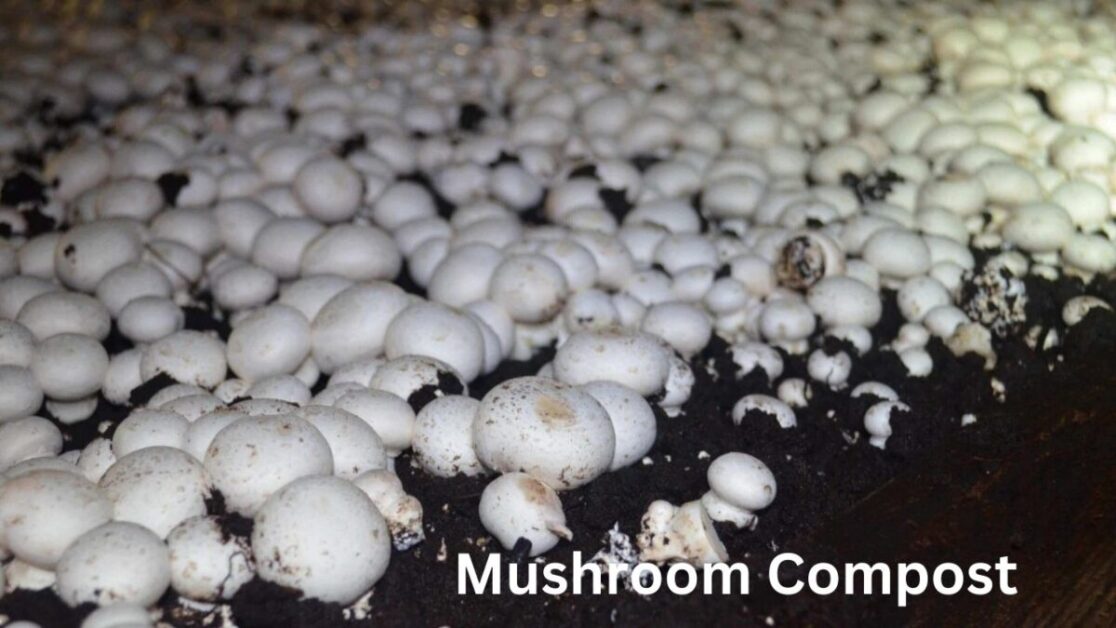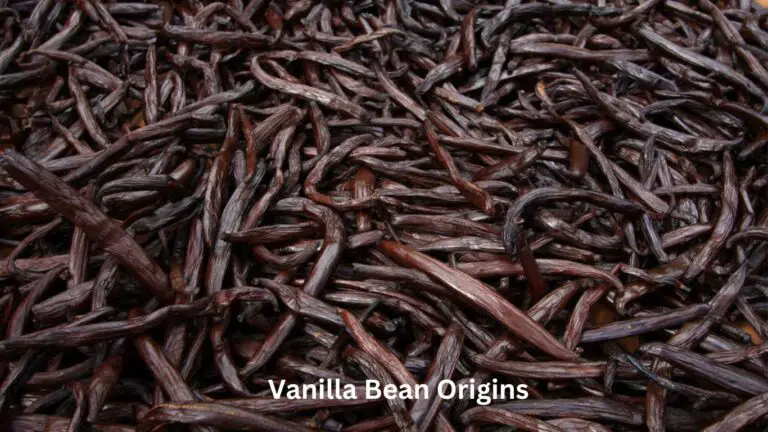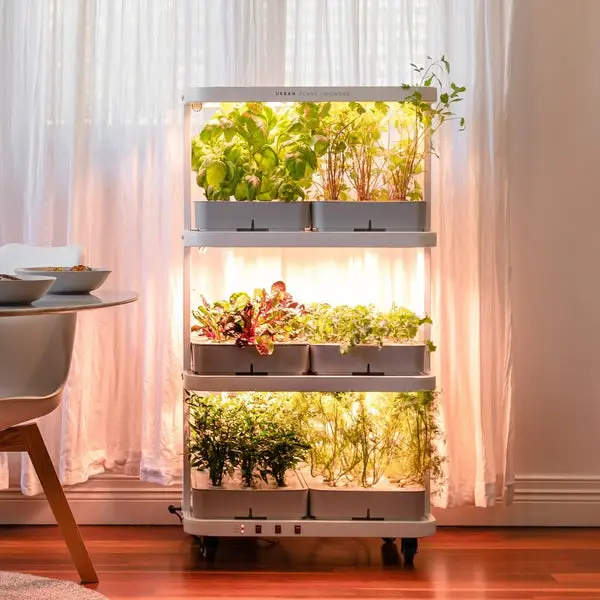Mushroom Compost: How to Make and Use This Amazing Soil Amendment
Table of Contents
What is Mushroom for Compost?
Mushroom compost, also known as mushroom soil or mushroom substrate, is a nutrient-rich material that is created through the decomposition of various organic materials used in the cultivation of mushrooms. It is a byproduct of the mushroom growing process and is highly valued for its ability to enhance soil fertility and promote healthy plant growth.
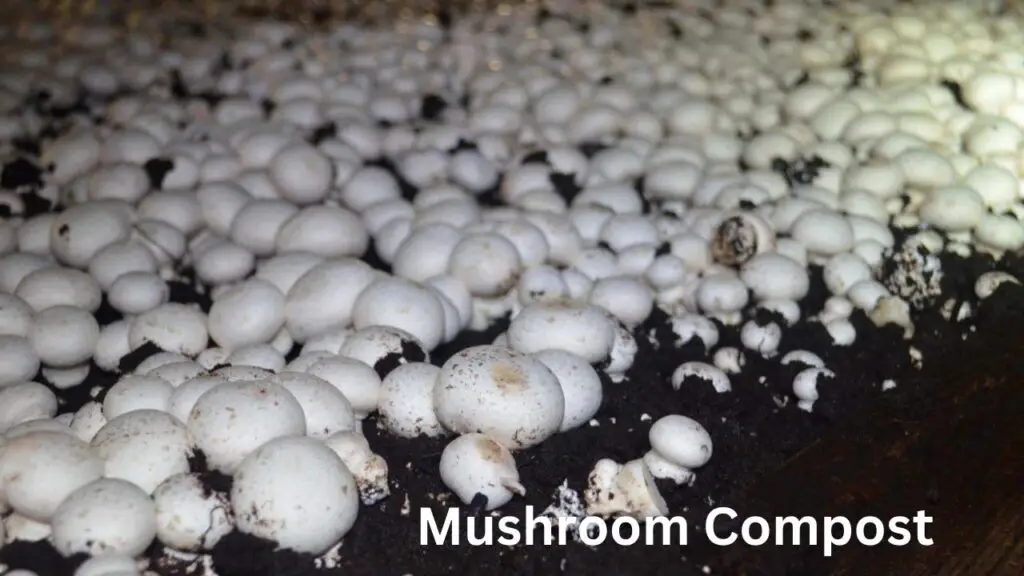
Mushroom compost is derived from a blend of materials such as straw, corn cobs, poultry manure, horse bedding, and gypsum. These ingredients undergo a controlled process of decomposition, which is carefully regulated to create optimal conditions for mushroom growth. As the organic matter breaks down, it transforms into a rich, dark brown compost that is teeming with beneficial microorganisms, essential nutrients, and humus – a complex substance that improves soil structure and water-holding capacity. The resulting mushroom compost is free from weed seeds and pathogens, making it safe and beneficial for use in gardening and farming applications.
The Benefits of Mushroom for Compost
Mushroom compost, also known as spent mushroom substrate (SMS), is a valuable organic material that offers numerous benefits for gardeners and farmers alike. One of the main advantages of using mushroom compost is its ability to improve soil fertility. This nutrient-rich material contains a wide range of essential elements, including nitrogen, phosphorus, potassium, calcium, and trace minerals, which are vital for healthy plant growth. Additionally, mushroom compost has a balanced pH level, making it suitable for a variety of plants and crops.

Moreover, mushroom compost provides excellent moisture retention properties, keeping the soil moist and reducing the need for frequent watering. This is particularly useful in regions with dry climates or during periods of drought. The compost’s high water-holding capacity helps plants establish strong root systems and withstand dry spells, ultimately leading to healthier and more resilient vegetation. Furthermore, the organic matter in mushroom compost improves soil structure, promoting better drainage and aeration, which are essential for optimal plant growth.
Understanding the Composition of Mushroom for Compost
Mushroom compost, also known as mushroom substrate or mushroom soil, is a nutrient-rich organic material that is created through the decomposition of various agricultural waste products. It is commonly used as a soil amendment in gardening and farming practices due to its ability to improve soil fertility and promote healthy plant growth. Understanding the composition of mushroom compost is crucial in order to harness its full potential and maximize its benefits.
The composition of mushroom compost can vary depending on the specific ingredients used in its production. However, it typically consists of a mixture of organic materials such as straw, hay, corn cobs, poultry litter, and various types of organic matter. These materials are subjected to a process where they are combined, moistened, and allowed to decompose under controlled conditions. This decomposition process is facilitated by the presence of a specific type of fungi known as white button mushrooms (Agaricus bisporus), which break down the organic matter and convert it into a nutrient-rich substrate suitable for mushroom cultivation.
In addition to organic materials, mushroom compost also contains other essential components that contribute to its nutritional value. These include nitrogen, potassium, phosphorus, calcium, magnesium, and trace elements such as zinc, iron, and copper. The high nutrient content of mushroom compost makes it a valuable resource for improving soil fertility and enhancing plant growth. Furthermore, it also helps in retaining moisture in the soil, improving soil structure, and promoting the development of beneficial microorganisms that aid in nutrient cycling and disease suppression. By understanding the composition of mushroom compost, gardeners and farmers can make informed decisions about its application and reap its numerous benefits for their plants and crops.
Choosing the Right Ingredients for Mushroom
When it comes to making mushroom compost, choosing the right ingredients is crucial for ensuring the success of your gardening endeavors. The ideal ingredients for mushroom should have specific properties that promote bacterial and fungal growth, provide necessary nutrients, and create an optimal environment for decomposition.
Here’s a table on choosing the right ingredients for mushroom :
| Ingredient | Description |
|---|---|
| Straw | Provides structure, aeration, and helps in moisture retention. |
| Horse Manure | Rich in nutrients and acts as a good source of organic matter. |
| Spent Mushroom Substrate | The leftover material from mushroom cultivation, which still contains valuable nutrients. |
| Gypsum | Helps in improving soil structure and preventing compaction. |
| Cottonseed Meal | Adds nitrogen to the compost, promoting healthy mushroom growth. |
| Soybean Meal | Another nitrogen source, contributing to the compost’s nutrient content. |
| Corn Cobs | Enhances aeration and adds a carbon source to balance the compost. |
| Calcium Carbonate | Regulates pH levels and provides calcium for mushroom development. |
| Water | Essential for maintaining the right moisture level in the compost. |
One key ingredient in mushroom is organic matter such as straw or hay. These materials serve as the base for the compost and provide the necessary carbon component for decomposition. It is important to choose organic matter that is relatively clean and free from contaminants to avoid potential problems later on. Additionally, the organic matter should not be overly compacted as this can hinder aeration and moisture retention within the compost pile.
Another essential ingredient is nitrogen-rich materials, such as poultry manure or nitrogen-rich plant residues. Nitrogen is a vital nutrient for promoting bacterial growth in the composting process. However, it is important to strike the right balance between carbon and nitrogen in the compost, as excessive nitrogen can lead to ammonia buildup and a foul odor. A general rule of thumb is to maintain a ratio of about 30 parts carbon to 1 part nitrogen in the composting mixture. This can be achieved by adding the appropriate amounts of nitrogen-rich materials to the compost pile.
By carefully selecting the right ingredients for your mushroom , you can create an optimal environment for decomposition and nutrient-rich compost that will greatly benefit your garden.
Step-by-Step Guide: Making Mushroom for Compost
Mushroom , also known as mushroom soil, is a nutrient-rich soil amendment that can greatly benefit your garden. It is made from a careful mix of organic materials, including straw, horse manure, poultry litter, and gypsum. The process of making mushroom involves several steps that ensure optimal nutrient content and microbial activity.
Step 1: Start by gathering the necessary materials. You will need fresh straw, which serves as the base material, as well as horse manure, poultry litter, and gypsum. It is important to source these ingredients from reputable suppliers to ensure their quality and reduce the risk of introducing weed seeds or harmful pathogens.
Step 2: Create a base layer of straw, about six to eight inches thick, in a designated composting area. This will serve as the foundation for the mushroom . Spread a layer of horse manure on top of the straw, followed by a layer of poultry litter. Repeat this layering process until you have a pile that is roughly four feet high.
Step 3: After completing the layering process, sprinkle gypsum on top of the pile. Gypsum helps to balance the pH and improve the structure of the compost. It also aids in the breakdown of organic matter, facilitating the release of nutrients.
Step 4: Water the pile thoroughly to ensure proper moisture content. Keep in mind that mushroom requires consistent moisture, so it is important to monitor and adjust the moisture levels as needed throughout the composting process.
Step 5: Turn the pile regularly to promote proper decomposition and aeration. This can be done using a garden fork or a compost turning machine. Turning the compost helps to evenly distribute heat, speed up the decomposition process, and prevent the growth of harmful pathogens.
Step 6: After several weeks of regular turning and monitoring, the mushroom should be ready. It should have a dark brown to black color and a crumbly texture. To test its readiness, squeeze a handful of compost tightly. If water drips out, it is not yet mature and needs more time to break down. Mature mushroom compost should have a pleasant earthy odor and a uniform consistency.
Making mushroom compost is a labor-intensive process that requires attention to detail and careful monitoring. However, the end result is a nutrient-dense soil amendment that can significantly improve the health and productivity of your garden.
Tips for Properly Curing Mushroom for Compost
Properly curing mushroom compost is crucial to ensure its effectiveness and maximize its benefits in your garden. Curing involves allowing the compost to go through a process of decomposition and maturation, which creates an ideal environment for beneficial microorganisms to thrive. Here are some essential tips to help you achieve optimal results:
1. Adequate Moisture Control: Maintaining the right moisture level is key during the curing process. Ensure that the compost remains moist, but not overly wet or dry. Too much moisture can lead to anaerobic conditions and the growth of harmful microorganisms, while excessive dryness can inhibit the decomposition process.
2. Regular Turning: Periodically turning the compost pile is vital to promote even decomposition and prevent the formation of compacted layers. Use a garden fork or compost turner to mix the materials thoroughly, allowing oxygen to permeate and facilitating the breakdown of organic matter.
By following these tips, you can ensure that your mushroom undergoes proper curing, resulting in nutrient-rich and biologically active compost that will enhance the health and fertility of your garden soil. Remember to monitor the curing process closely and adjust the moisture levels and turning frequency as needed.
Testing Mushroom for Maturity
To ensure that your mushroom is properly matured and ready for use in your garden, it is important to carry out a thorough testing process. Testing a mushroom for maturity involves assessing its physical and chemical characteristics to determine if it has reached the optimal nutrient levels and microbial activity for plant growth.

One of the key tests for assessing the maturity of mushroom compost is the ammonia test. High levels of ammonia can be detrimental to plants, so it is crucial to monitor and control its presence. To conduct the ammonia test, collect a representative sample of the compost and mix it with distilled water. Use a pH meter or test strips to measure the pH level of the solution. A pH below 7 indicates the presence of ammonia, signaling that the compost is not yet mature and requires further curing. However, if the pH level is around 7 or slightly higher, it indicates that the ammonia has been effectively broken down during the composting process, indicating maturity.
How to Apply Mushroom Compost to Your Garden
Applying mushroom compost to your garden is a simple and effective way to enhance soil fertility and promote healthy plant growth. To get started, prepare the area where the compost will be applied by removing any weeds or debris. It’s important to note that mushroom compost should be used as a soil amendment rather than a mulch, so it is best to mix it into the top few inches of the soil.
Next, spread a layer of mushroom compost evenly over the garden bed, aiming for a thickness of about 1 to 2 inches. Using a rake or garden fork, gently incorporate the compost into the top layer of soil. This will ensure that the nutrients and organic matter in the compost are distributed evenly throughout the bed.
Keep in mind that mushroom compost can be quite alkaline, so it is a good idea to regularly test the pH of your soil and make any necessary adjustments to maintain optimal growing conditions for your plants. Additionally, be mindful of the moisture levels in your garden, as mushroom compost tends to retain water. Regularly monitor moisture levels and adjust watering accordingly to prevent over-saturation. With these simple steps, you can make the most of mushroom compost and reap the benefits of healthier, more vibrant plants in your garden.
Enhancing Soil Fertility with Mushroom Compost
Soil fertility plays a crucial role in the success of any garden or farming endeavor. The quality of the soil directly impacts the health and productivity of plants, making it essential to enhance soil fertility through various means. One such method gaining popularity among gardening enthusiasts is the use of mushroom compost.
Mushroom compost, also known as mushroom soil or mushroom substrate, is a nutrient-rich organic material that is produced during the commercial cultivation of mushrooms. It is a byproduct of the mushroom growing process and is created by composting various organic materials such as straw, hay, poultry manure, and other agricultural waste products. This compost undergoes a specific fermentation process, resulting in a dark, crumbly material that is teeming with beneficial microbes, essential nutrients, and organic matter.
The use of mushroom compost as a soil amendment offers numerous benefits in terms of enhancing soil fertility. Firstly, it improves the soil’s structure by increasing its ability to retain moisture while also improving its drainage properties. This is especially beneficial for gardeners in areas with heavy clay soils or poor drainage. Secondly, mushroom compost provides a rich source of organic matter, which helps increase the soil’s nutrient-holding capacity and promotes microbial activity. These microbes break down organic materials, releasing nutrients in a form that is readily available to plants. This results in improved nutrient uptake, leading to healthier and more vigorous plant growth. Furthermore, the organic matter in mushroom compost helps to improve soil aeration and reduces erosion, creating an optimal environment for root development and overall plant health.
Using Mushroom Compost for Container Gardening
Container gardening is a popular choice for many gardening enthusiasts, especially those with limited space or urban dwellers. One way to enhance the fertility and nutrient content of your container soil is by using mushroom compost. Mushroom compost, also known as mushroom soil or mushroom substrate, is a rich organic material that is created from the waste products of mushroom cultivation.
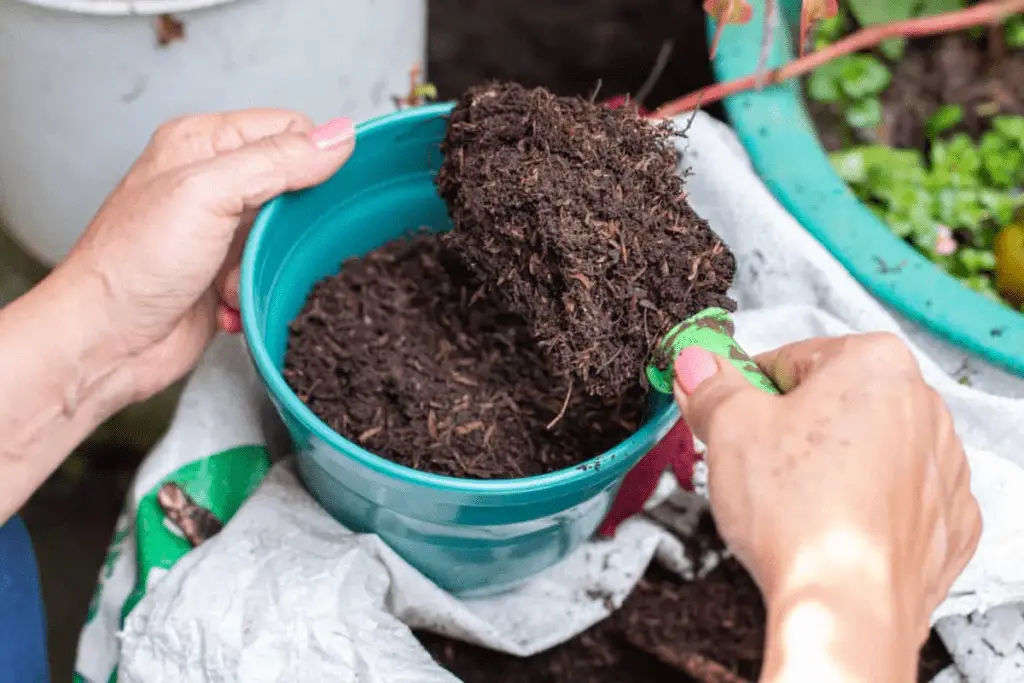
The use of mushroom compost in container gardening has several benefits. Firstly, it helps to improve the structure of the soil, creating a well-draining and loose texture that is ideal for container plants. This is essential for preventing waterlogging, which can lead to root rot and other fungal diseases. Additionally, mushroom compost is a great source of nutrients for plants, providing a balanced blend of essential minerals and organic matter. This can promote healthy growth, improve flowering and fruiting, and enhance the overall vigor of your container-grown plants.
Preventing and Managing Common Issues with Mushroom Compost
In order to prevent and manage common issues with mushroom compost, it is important to understand the potential challenges that may arise. One common issue is the presence of weed seeds in the compost. Weed seeds can easily find their way into the composting process and germinate once the mushroom compost is applied to the garden. To address this issue, it is crucial to source high-quality mushroom compost from reputable suppliers who follow proper composting practices to minimize the presence of weed seeds.
Another issue that can occur is the potential for contamination from pathogens and pests. While the process of composting does help to eliminate many of these concerns, there is still a possibility of them being present in the mushroom compost. To mitigate this risk, it is advisable to carefully monitor the composting process and ensure that the compost reaches the recommended temperature levels for killing pathogens and pests. Additionally, practicing good hygiene and sanitation when handling the compost and applying it to the garden can help minimize the spread of any potential contaminants.
By being aware of these common issues and taking necessary precautions, gardeners can effectively prevent and manage any challenges that may arise when using mushroom compost. Through proper sourcing, composting, and handling techniques, the benefits of mushroom compost can be maximized while minimizing any potential drawbacks. Taking these proactive measures will help to ensure a healthy and thriving garden that is free from weed infestations and potential contamination from pathogens and pests.
Incorporating Mushroom Compost in Organic Farming
Incorporating mushroom compost in organic farming can be a game-changer for farmers looking to enhance soil fertility and promote sustainable agriculture practices. Mushroom compost, also known as substrate, is a nutrient-dense material that is the byproduct of mushroom cultivation. It is rich in organic matter and essential minerals, making it an excellent choice for organic farmers.
One of the key benefits of using mushroom compost in organic farming is its ability to improve soil structure. The compost helps to increase the water-holding capacity of the soil, allowing for better moisture retention and reducing the need for irrigation. Additionally, it enhances the soil’s ability to absorb and retain nutrients, which is crucial for plant growth and development. Incorporating mushroom compost also introduces beneficial microorganisms into the soil, promoting a healthy and balanced ecosystem.
Moreover, the use of mushroom compost can aid in weed suppression, reducing the need for herbicides in organic farming. The compost acts as a natural mulch, providing a barrier that inhibits weed growth and competition with crops. This not only saves farmers time and effort in weed management but also helps to maintain the integrity of the organic farming system.
Furthermore, mushroom compost has been found to contribute to disease suppression in organic farming. The compost contains naturally occurring antimicrobial compounds that can help control soil-borne pathogens. This can be particularly beneficial for farmers practicing crop rotation, as it reduces the risk of disease buildup in the soil.
Incorporating mushroom compost in organic farming is a sustainable and environmentally friendly practice that can have significant positive impacts on soil health and crop production. With its numerous benefits, it is no wonder that more and more organic farmers are turning to this nutrient-rich material to optimize their farming practices.
Long-Term Maintenance of Mushroom Compost in Your Garden
Long-term maintenance of mushroom compost in your garden is essential to ensure the continued health and productivity of your plants. Once you have successfully incorporated mushroom compost into your soil, there are a few key considerations to keep in mind.
Firstly, it is important to monitor the moisture level in your soil regularly. Mushroom compost tends to retain moisture, which can lead to over-watering if not managed properly. Ensure that your garden has proper drainage to prevent waterlogging and avoid excessive watering. Regularly check the moisture level using a moisture meter or by simply feeling the soil with your fingertips. Adjust your watering schedule accordingly to maintain the optimal moisture level for your plants.
Secondly, be mindful of the nutrient needs of your plants. While mushroom compost is rich in nutrients, the availability and concentration of these nutrients can diminish over time. To maintain the fertility of the soil, consider supplementing with organic fertilizers or compost that can provide a balanced nutrient profile. Conduct regular soil testing to assess the nutrient levels and adjust your fertilization strategy accordingly. This will help ensure that your plants receive the necessary nutrients for healthy growth and abundant yields.
By practicing diligent monitoring of moisture levels and nutrient supplementation, you can maximize the benefits of mushroom compost and create a thriving garden that continues to flourish over the long term. Remember to adopt eco-friendly practices and avoid the use of synthetic chemicals that may disrupt the delicate balance of the soil ecosystem. With proper care and attention, your garden will reap the rewards of utilizing mushroom compost to its fullest potential.
Exploring Alternative Uses for Mushroom Compost
Mushroom compost, with its rich nutrient content and ability to enhance soil fertility, is not just limited to traditional gardening practices. In fact, this versatile organic material can be utilized in various alternative ways that go beyond the conventional use in gardens. One of the alternative uses for mushroom compost is in the cultivation of edible mushrooms themselves.
Watch this video to learn more!
Mushroom provides the ideal growing environment for mushrooms due to its high organic matter content and balanced nutrient composition. Its ability to retain moisture while still allowing for adequate drainage is crucial for the successful cultivation of mushrooms. Whether you are growing edible varieties like button mushrooms, shiitake, or oyster mushrooms, or even exploring more exotic species, mushroom compost can serve as an excellent substrate to promote their growth. By harnessing the valuable nutrients and microbiological activity found in mushroom compost, you can create a thriving environment for your mushroom cultivation endeavors.
Can mushroom be used as a fertilizer?
Yes, mushroom compost can be used as a fertilizer due to its high nutrient content. It provides essential nutrients for plants, such as nitrogen, phosphorus, and potassium.
Is mushroom suitable for all types of plants?
Mushroom compost is generally suitable for a wide range of plants, including vegetables, flowers, and shrubs. However, some plants may have specific soil requirements, so it’s always recommended to research the specific needs of your plants before using mushroom compost.
Can mushroom compost improve soil structure?
Yes, mushroom compost has the ability to improve soil structure. It helps loosen heavy clay soils and enhances water drainage, while also increasing the water-holding capacity of sandy soils.
Is mushroom compost acidic or alkaline?
Mushroom compost is usually slightly acidic, with a pH level ranging from 6.0 to 6.8. This makes it suitable for a variety of plants, as most prefer a slightly acidic to neutral pH range.
Can mushroom compost be used as a mulch?
Yes, mushroom compost can be used as a mulch to help suppress weeds, conserve moisture, and regulate soil temperature. However, it’s important to note that freshly made mushroom compost may contain viable mushroom spores, which could lead to unwanted mushrooms growing in the mulch.
Can mushroom compost be used in hydroponic systems?
While mushroom compost can contain beneficial nutrients, it is not typically used in hydroponic systems. Hydroponic systems rely on nutrient solutions that are specifically formulated for hydroponic growing, which provide precise control over nutrient ratios.
Can mushroom compost attract pests or diseases?
Mushroom compost is generally considered safe and unlikely to attract pests or diseases. However, it’s always a good practice to monitor your garden regularly and take appropriate measures if any issues arise.
How often should mushroom compost be applied to the garden?
The frequency of applying mushroom compost depends on various factors such as the specific needs of your plants, soil conditions, and climate. It is generally recommended to apply a layer of mushroom compost once or twice a year to maintain soil fertility.
Can mushroom compost be used in conjunction with other fertilizers?
Yes, mushroom compost can be used in conjunction with other fertilizers. It can complement the existing nutrient levels in the soil and provide additional organic matter. However, it’s important to consider the specific needs of your plants and avoid over-fertilization.
Is mushroom compost safe for edible plants?
Yes, mushroom compost is safe to use on edible plants. However, it’s crucial to ensure that the compost has been properly cured and tested for maturity to avoid any contamination. Additionally, it’s recommended to wash edible plants thoroughly before consumption.

